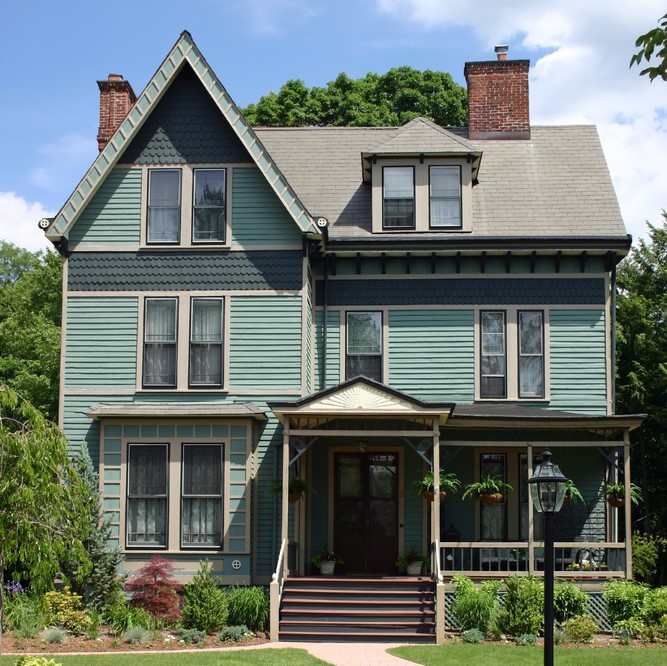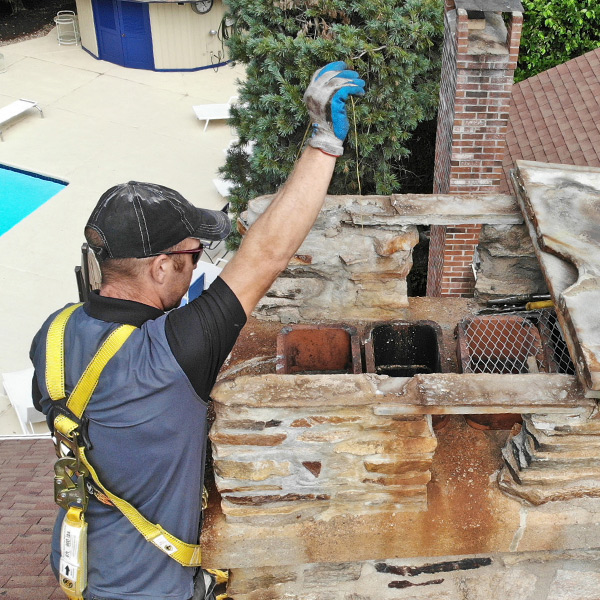Common Chimney Problems in Aging & Historic Homes
 Old homes that reflect the architecture and charm of designs from the past have tremendous appeal, but it is critical to address issues that come with an old chimney. In aging and historic homes, chimney problems are inevitable. Read on to learn some of the most common problems associated with the chimneys in old and historic homes.
Old homes that reflect the architecture and charm of designs from the past have tremendous appeal, but it is critical to address issues that come with an old chimney. In aging and historic homes, chimney problems are inevitable. Read on to learn some of the most common problems associated with the chimneys in old and historic homes.
Dangers of Having No Chimney Liner
Since at least the 1940s, the absence of a liner in a chimney has been recognized as an imminent danger. Fire safety experts continue to share a quote from that time period in which it was said that not having a chimney liner is hazardous at a near-criminal level.
Chimney liners became mandatory in the U.S. in the 1950s. Historic homes from the 1940s and earlier were usually built with no chimney liner. The following are the primary dangers associated with using a chimney that doesn’t have the protection of a flue liner.
The Threat of a House Fire Due to Pyrolysis
Protecting combustible parts of the home is one of the essential functions of a chimney liner. When a fireplace is used without a flue liner or with a damaged liner, the exposed combustion materials go through a gradual process known as pyrolysis. As a result of pyrolysis, the structures are altered so that they combust at a much lower temperature. With no warning, a house fire will ignite and spread rapidly throughout the home.
Exposure to Carbon Monoxide
Chimney liners also keep the toxic combustion gases from fires contained in the chimney until they escape to the outdoors. Those same gases enter the home in the absence of a flue liner. Carbon monoxide is one of the byproducts of fires. Carbon Monoxide is known as a silent killer because it is odorless, tasteless, invisible, and symptomless and escape from the deadly fumes is often impossible.
Highly Combustible Creosote
Wood fires produce creosote, a highly flammable tar-like substance that is deposited into a chimney every time a fire is lit. If a burning ember floats up the chimney, it can cause the creosote to ignite. Chimney fires are always dangerous but especially when a chimney is not lined because virtually any chimney fire could easily spread throughout the home.
 Masonry Damage
Masonry Damage
Bricks are durable, lasting a century or more if undamaged. Mortar, on the other hand, lasts only about 25 years at best. The mortar should be replaced whenever it begins to deteriorate because one of its primary functions is to protect the masonry system from moisture. If moisture intrusion occurs, winter cycles of freezing and thawing create movement in the bricks that break them down. A chimney will begin to lean and could even collapse when this occurs, though moisture can get in through other avenues besides damaged mortar as well.
Spalling is evidence of masonry damage. Spalling is when the brick face flakes and pops off, and piles of debris around the chimney or the ground below provide evidence that the destructive process is occurring.
Settling
Normal settling of a house doesn’t necessarily cause foundation damage. With older homes, there is a greater chance of damage caused by a shifting foundation. Cracked masonry is one of the symptoms of settling, and it is also one of the reasons to call a chimney sweep specialist to provide masonry repair.
Contact Northeastern Chimney Today
Connecticut has four centuries of homes, and the CSIA-certified chimney sweeps at Northeastern Chimney have the skill and experience to provide top-quality chimney services for old and historic homes. Schedule a chimney inspection, chimney liner installation, chimney cleaning, and all other chimney services by calling 860-233-5770 today.


